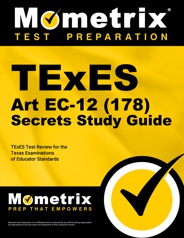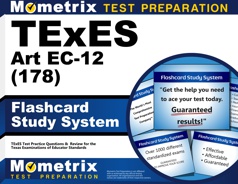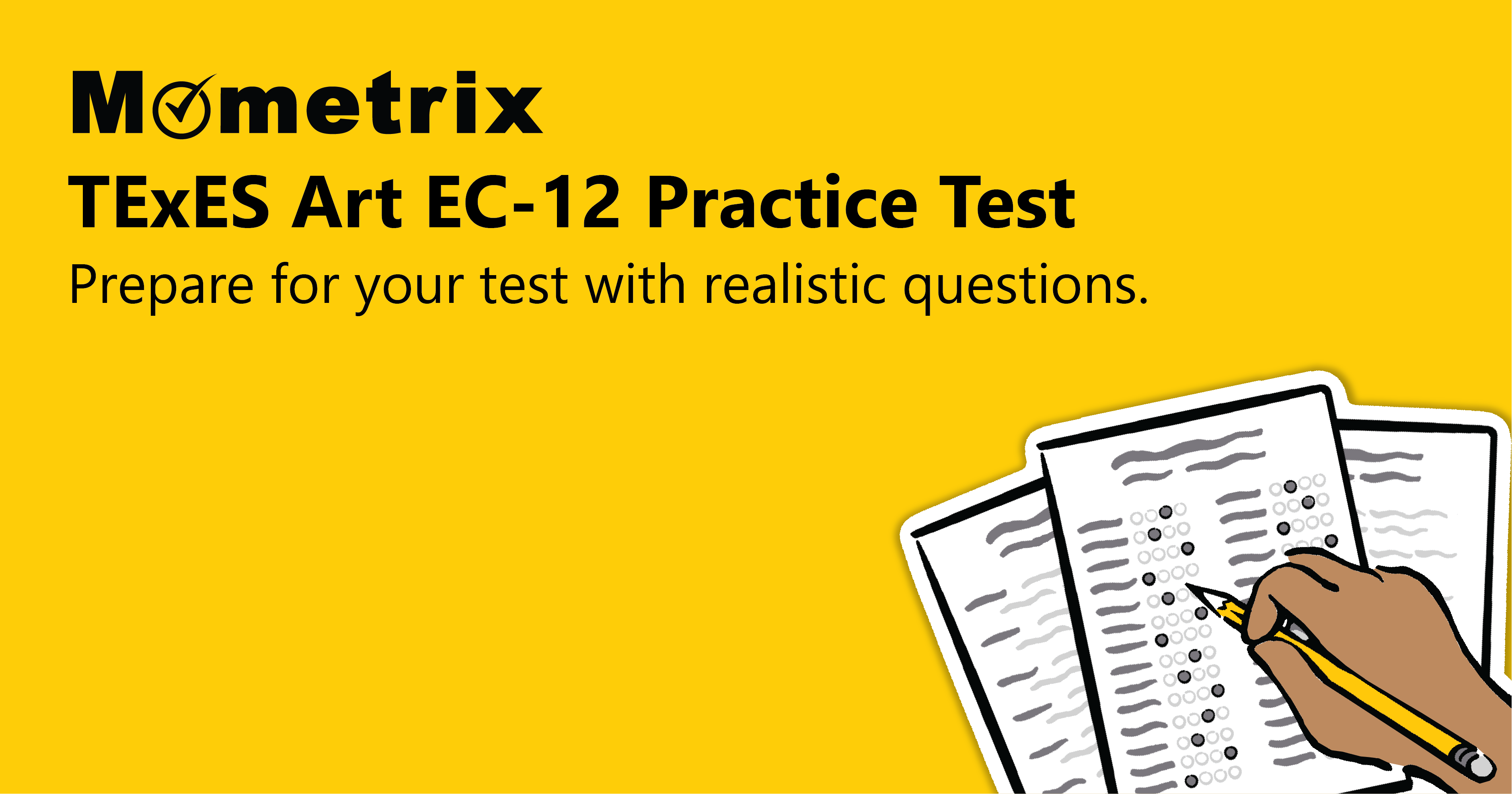The TExES Art EC-12 (178) exam is administered for those interested in becoming an entry-level educator within the Texas public school system, specifically for teaching art to students from early childhood through the 12th grade.
Click “Start Test” above to take a free TExES Art EC-12 practice test!
TExES Art EC-12 Exam Outline
The TExES Art EC-12 exam contains 100 selected-response questions and has a time limit of 4 hours and 45 minutes.
The exam is split into four content domains, and the questions in each domain fall under one or more of the following assessment standards:
You are expected to understand how ideas for creating art are organized and developed from the perception of self, others, and natural and human-made environments.
You are expected to understand the needed techniques and skills for creative and personal expression via the creation of original pieces of artwork in a wide breadth of media.
You are expected to understand and promote students’ appreciation of diverse cultures and art histories.
You are expected to understand the skills needed to analyze, interpret, and evaluate artwork and help students make informed judgments about artwork.
You are expected to understand the cognitive and artistic development of children and know how to implement effective art instruction and assessment.
I. Creating Works of Art (32%)
The questions in this domain fall under Art EC-12 Standards I and II and cover these specific areas:
- The elements and principles of art
- Analyzing visual artwork
- Tools, materials, processes, and techniques used in drawing and painting
- Tools, materials, processes, and techniques used in sculpture and ceramics
- Tools, materials, processes, and techniques used in fiberart and jewelry
- Tools, materials, processes, and techniques used in printmaking and photography
- Tools, materials, processes, and techniques used in electronic art forms
II. Art, Culture, and History (27%)
The questions in this domain fall under Art EC-12 Standards I, II, III, and IV and cover these specific areas:
- How the visual arts shape and reflect history, culture, and society
- Similarities and differences among artworks from various cultures throughout history
- Distinguishing characteristics of artworks from each continent throughout history
III. Aesthetic Knowledge and Analysis of Art (14%)
The questions in this domain fall under Art EC-12 Standards I, II, III, and IV and cover these specific areas:
- Skills and knowledge that contribute to visual perception and literacy
- Basic principles of analysis, interpretation, and critique of artworks from various cultures
IV. Art Education (27%)
The questions in this domain fall under all five Art EC-12 Standards and cover these specific areas:
- Selection and use of curricula and instructional strategies
- The development of thinking skills needed for students to create, evaluate, and appreciate works of art
- The development of productive skills needed for students to create works of art
- Reading and study strategies that contribute to learning
- Basic approaches and principles for assessment
- Career choices, professional development, and avocations available in the visual arts
Check out Mometrix's Study Guide
Get practice questions, video tutorials, and detailed study lessons
Get Your Study Guide
Registration
To register for the Art EC-12 exam, you must create an online NES account via their website. Once your account has been created, you can use it to register for the exam and schedule an exam date.
When you register, you will need to pay the $116 examination fee.
Test Day
On the day of your testing appointment, you should arrive at the testing center 30 minutes prior to the scheduled time. Once you arrive, you will be asked to present one form of valid, government-issued photo ID. If you arrive late or without your ID, you will not be permitted to take the exam.
After the check-in process is complete, you will be asked to leave all personal items in a secure locker outside the testing area or in your car. This includes things like your cell phone, wallet, purse, and food items.
Once you enter the testing room, you will be given a brief tutorial on the testing system, and you will be asked to sign an NDA. Once this is complete, the exam will begin.
How the Exam is Scored
The TExES Art EC-12 (178) exam is scored on a scale of 100-300.
To pass the exam, your final scaled score must be 240 or higher.
Check out Mometrix's Flashcards
Get complex subjects broken down into easily understandable concepts
Get Your Flashcards
FAQs
Q
How many questions are on the TExES Art EC-12 exam?
A
There are 100 selected-response questions on the exam.
Q
How long is the TExES Art EC-12 exam?
A
The time limit for the exam is 4 hours and 45 minutes.
Q
What is the passing score for the TExES Art EC-12 exam?
A
To pass the exam, you must achieve a minimum scaled score of 240.
Q
How much does the TExES Art EC-12 exam cost?
A
The examination fee is $116.
Mometrix Test Preparation is not affiliated with or endorsed by any official testing organization. All organizational and test names are trademarks of their respective owners.



